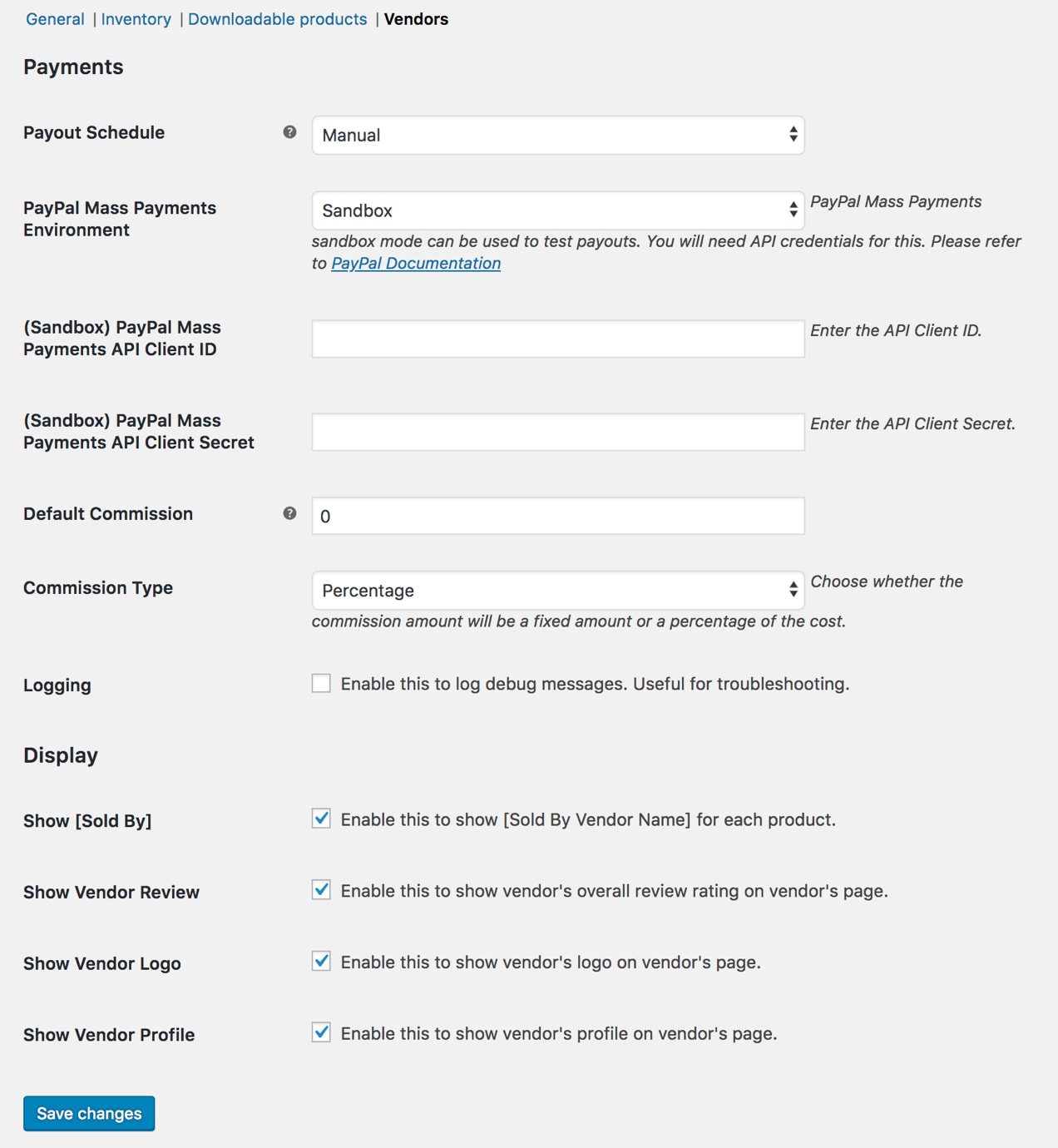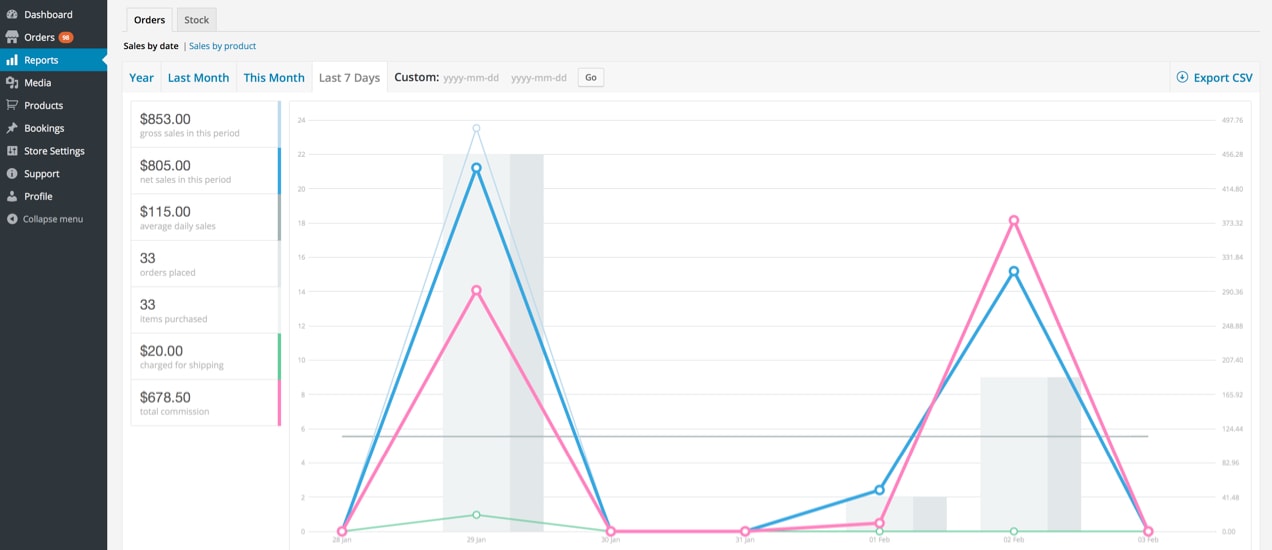Entering the world of ecommerce can feel like a big step. One way to make it easier is to share audiences and costs with other like-minded businesses.
This setup — known as a multi-vendor marketplace — creates a shared storefront for multiple sellers on a single website. Each seller in the community can create, edit, and control their own products. Shoppers can add any combination of items to their carts and make all their purchases as part of one checkout.
It’s a great way for a small business to get a little extra help when starting out, or for existing stores to expand their markets.
Multi-vendor means community for both sellers and customers
↑ Back to topThe biggest plus of a multi-vendor marketplace is the kinship with other entrepreneurs. The shops you partner with become part of your inner circle. They can answer questions and provide support as you navigate sales and growth challenges — and you can pass your expertise on to the next generation of entrepreneurs.
Sharing one storefront means you’re sharing customers, too. You’re building a wider brand by pulling together sellers with common ideals and target audiences. Partner with vendors who sell items your own customers would love — and whose customers would love your products, too.
And with everyone coming together under one unified brand, your customers can create their own community. Your website and supporting social media feeds become places where shoppers with common interests gather, and where you can engage with and learn about them.
Multi-vendor benefits for marketplace owners
↑ Back to topIf you own and manage a WooCommerce site, there are several direct benefits to becoming a multi-vendor operation:
An additional income stream. When you invite new vendors into your marketplace, you can take commission on each of their sales. Establish a standard commission rate across the site, or offer sellers different rates tied to criteria like number of products and established audience. Be upfront about your transaction fees, and then let their sales contribute to your overall site maintenance costs.
An expanded audience. As new sellers join your platform, they bring new sets of customers. Ideally, you’ll choose vendors that all sell complementary products. If you want to create a home chef theme, target merchants who all sell kitchenware and gadgets, but not the same items. Perhaps some sell towels, some custom knives, and others rolling pins or bakeware. Each vendor uses their own social media accounts, word-of-mouth contacts, and established customer base to bring more visitors to your marketplace. The more vendors, the more customers for everyone.
Full control over members. As the marketplace owner, you’re in control of what’s displayed on your site. When new vendors apply to join, you can accept only those that fit the overall brand you’re building. Accepted vendors can create their own products in the WooCommerce dashboard, but you maintain quality control and only items you approve go live on the site.

Automated payouts. Worried about calculating complicated payments for each seller? Don’t be. Use the WooCommerce Product Vendors extension to set up automatic payments through PayPal on whatever schedule you’d like. Hold payouts until orders are actually complete and any return periods have expired, and automatically pay vendors per sale, bi-weekly, or monthly.
Shared responsibility. Spread the responsibility of running and maintaining the site by designating administrative users who have control over the shop. Your new team of admins will be able to approve vendors and products, deal with password issues, and manage featured products on your behalf while you stick to the stuff you love: creating and selling your own items.
Multi-vendor benefits for sellers
↑ Back to topA multi-vendor site is good for merchants, too. They’ll benefit from instant access to a shared audience and won’t have to incur the expense or effort to build a shop from scratch. But this doesn’t mean they’re limited. When they join your marketplace, they’ll be able to:
Create their own products and control their own inventory. Vendors have limited access to the WordPress dashboard to create products, upload images, set prices, and describe their creations in the most accurate way. Vendors also have the power to control their own inventory numbers, so availability is accurate and instantly updated for visiting customers.
Set their own shipping rates. Vendors can set shipping rates for products, so they aren’t tied into a strict pricing structure for items that are bulky, heavy, or require extra postage.
Add customer notes. Order confirmation emails can include vendor notes, so sellers can speak directly to their customers. Emails can include delivery details, instructions, or required disclaimers — in their own words, and without full administrative access.

Get individual sales reports. Vendors can see their own sales numbers and customer information, in an easy-to-read format, in the WooCommerce dashboard. They can use their data to make sure that they’re listing the right products in the right places, and to drive their own marketing campaigns.
Sell anything. With WooCommerce, vendors can sell physical items, digital downloads, or both. With extensions, you can offer even more options. One popular choice: WooCommerce Bookings, which allows your vendors to sell consultations and appointments.
Making it all happen
↑ Back to topTo build your own multi-vendor site, start by setting up a WordPress site and installing WooCommerce. Then, add one key extension: Product Vendors. Follow the detailed documentation to set up your marketplace and get started.
Renew your Product Vendors subscription annually to access security upgrades, new features, and priority assistance.
With these few simple pieces in place, you’re ready to get selling — and ready to start community building. As a marketplace owner, your individual income will grow and your reputation as a business owner that builds connections will grow, too.
About



We’re thinking about using Product Vendors for our small store, where we sell both our items and items from local artists on consignment. Is that a good scenario for Product Vendors?
That would also mean that we need a report that lists all earned consignment fees for custom time periods. Is there a way to do that?
Thanks!
Hi Don, that’s a great scenario for Product Vendors! You can find out more details about the reporting capabilities here; https://docs.woocommerce.com/document/vendor-guide/
I would love to use this plugin, however, I do not want to be responsible or have to deal with collecting money for the vendors’ products. Is there a way to simply charge them a per product commission or a monthly or yearly fee and let them be responsible for collecting the money for their products?
Hi Kathy, 👋
I hear you. Being responsible for that collection can add extra headaches as a shop owner. From a code standpoint, this is unfortunately not something that’s currently possible with the Product Vendors extension. Accounting for different scenarios and routing all the transactions correctly creates some big technical hurdles.
I don’t know exactly what your current business process looks like for vendors and inventory, but you might be able to accomplish what you described (at least partially) using WooCommerce Subscriptions and External / Affiliate products. Vendors would sign up and pay a monthly or yearly fee in exchange for being able to have their products listed in your store.
In this scenario, you’d be responsible for managing everyone’s listings (similar to how a newspaper handles advertisements), and each vendor would need to have their own store set up externally for handling sales. You’d just need to have your External/Affiliate products link to the URL where they can purchase it externally.
There’s more information about WooCommerce Subscriptions available here: https://woocommerce.com/products/woocommerce-subscriptions/
And you can find more info about adding External/Affiliate products here: https://docs.woocommerce.com/document/managing-products/#section-16
Do you have tutorial on multi vendor marketplace?
Sure! You can check out the full documentation here: https://docs.woocommerce.com/documentation/plugins/woocommerce/woocommerce-extensions/product-vendors/
In voga
A beginner’s guide to ecommerce SEO
By Kevin Bates •
How Landyachtz cut ecommerce costs by more than 75% and gained full control with WooCommerce
By Mahrie Boyle •
Prepare your business for 2026 EU tax changes
By Lynn J •
Never miss a beat — join our mailing list
Please enter a valid email.
View our privacy policy. You can unsubscribe anytime.
There was an error subscribing; please try again later.
Thanks for subscribing!
Emails will be sent to
You're already subscribed!
Emails are sent to